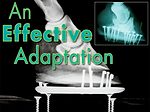Advertise Follow Us
Articles Tagged with ''Lamesness''
Meaning horses spend very little time moving over level ground — something Scott Lampert says you need to keep in mind while your shoeing
Read More
How Comfortable Are You With Radiography?
If you’re not working with equine veterinarians to get a look inside problem hooves, you might not be doing all you can for the horses and their owners. Here’s how to get more involved with this technology
Read More
Vet's Corner
An Effective Adaptation
Shoeing system designed to treat laminitis proves effective in case of a horse with a malformed navicular bone
Read More
The Importance of Frog Engagement
Therapeutic shoeing protocol manages this artificially, enhancing soundness in horses with navicular problems
Read More
Vet-Farrier Double-Team
Chronic Abscess Case Study
Resection, soaking are among methods used by farrier an vet to return a mare to soundness
Read More









